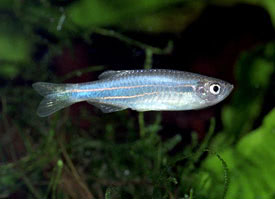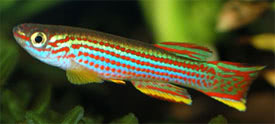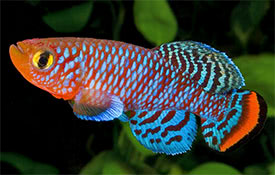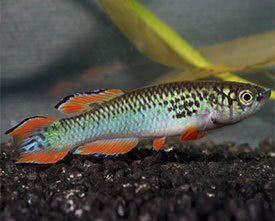
 Magyarul / Hungarian
Magyarul / Hungarian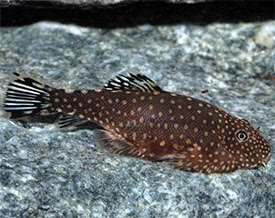

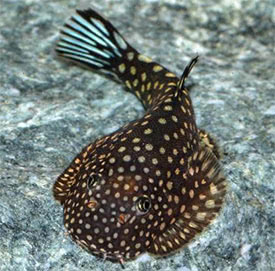

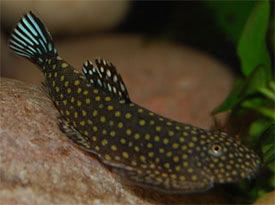

- Scientific name: Gastromyzon ctenocephalus
- Synonyms: Spiney-headed hillstream loach
- Common name: Borneo Sucker
- Group: Loaches
- Habitat: Asia; Western Borneo
- Size: 3,5-4 cm
- Biotope: Inhabits shallow and fast-flowing mountain streams.
- Social behavior: A peaceful and shy loach, but because of their special requirements it is best to keep them in a species tank. They will form small territories, and will defend it against other fish, and these are usually their prime feeding spots.
- Diet: Omnivorous; in nature they mainly eat benthic algae and other micro-organisms. In the aquarium they will accept frozen and dried foods too, but their mainly diet should be algae, and other vegetable matter.
- Breeding: It has not been bred in aquarium.
- Tank: Minimum 70 litres
- Population: 4-5 fish for 100 litres
- Decoration: The most important thing is the clean, fast flowing, and well-oxygenated water, which can be achieved by an over-sized filter. Turnover should ideally be 10-15 times of the aquarium volume per hour. Use sand or gravel substrate, with many smooth, water-worn rocks, that can also serve as hiding places.
- Temperature: 20-24 °C
- pH: 6-7.5
- Hardness: 1-12 NK°
- Lifespan: 6 years
Description: Spiney-headed hillstream loach has a brown body that covered with light-yellowish spots. The fins have a yellowish striped and blotched pattern with a hint of blue. It has a streamlined body with a flat belly that adapted well for the rocky bottoms of fast moving streams, where it eats algae from solid surfaces. It is very similar to Gastromyzon scitulus, but they can be easily tell apart because Gastromyzon ctenocephalus has generally smaller yellowish spots, and distributed more densely on its body, its dorsal fin has blue markings, and its caudal fin has continuous horizontal blue stripes. As with all sucker-type Hillstream species Gastromyzon ctenocephalus also need fast water-flow and well-oxygenated clear water. Lighting should be bright to encourage algae growth, or place their aquarium to get some direct sunlight. Provide hiding places of some larger boulders and smooth stones where they can graze on algae too. They rarely encounter aquatic plants in their natural habitat, so it is not necessary in their aquarium, but Anubias and Microsoreum can be used to maintain the water quality. They should be kept in a small group of 4-5 fish. They are quite shy fish, but when they are frightened, they can be quite quick. They are protective of their territory and will engage in tests of strength where one fish will try and cover the other fish, referred to as "topping". These battles can be quite entertaining to watch, and rarely end up with any damage, usually one fish will give up and leave the territory. This is one of the more commonly-traded members of the genus. For many years this fish was referred as Gastromyzon punctulatus, but since a great revision of this genus in 2006 it has the scientific name of Gastromyzon ctenocephalus, although in the aquarium trade they use the catch-all name Gastromyzon punctulatus for this group of species or the similar looking species. The real Gastromyzon punctulatus is not currently traded, their body is lighter colored and less-intensely spotted, while their fins are yellowish.
It is hard to distinguish between the sexes, males have a more squarer snout, while females have rounder heads and they are plumper and often a bit larger. It is more obvious when viewed from above or below. There are no information about their breeding in aqaurium.






